As part of the celebration of the 70th anniversary of Topps baseball cards, we've asked fans (as well as our staff) to submit their all-time favorite baseball cards, and we've broken them down by team. We'll be revealing submissions regularly throughout the season, ranging from the famous to the weird, and everything in between.
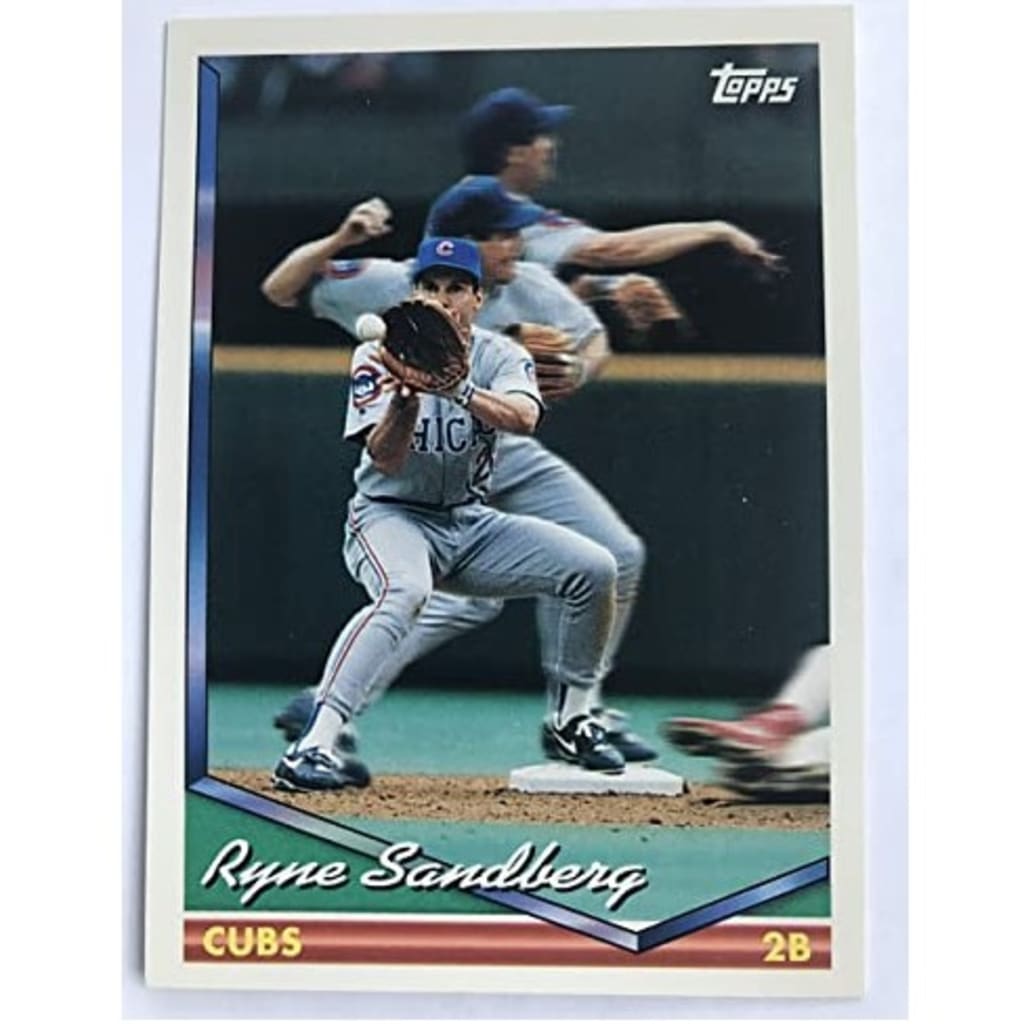
Ryne Sandberg, 1994 Topps
There are other examples of multiple-exposure cards, but this might be the only one that depicts a Hall of Fame second baseman turning the double play.
Sandberg's '94 Topps card, which shows him pre-throw, mid-throw and post-throw at second base, all in one shot, was mentioned in our survey by George Naranjo of Elgin, Ill., who wrote:
“Not only is he my favorite player of all time, as I am a huge Cubs fan, but the triple exposure photograph is a thing of beauty.”
It’s hard to disagree. -- Thomas Harrigan
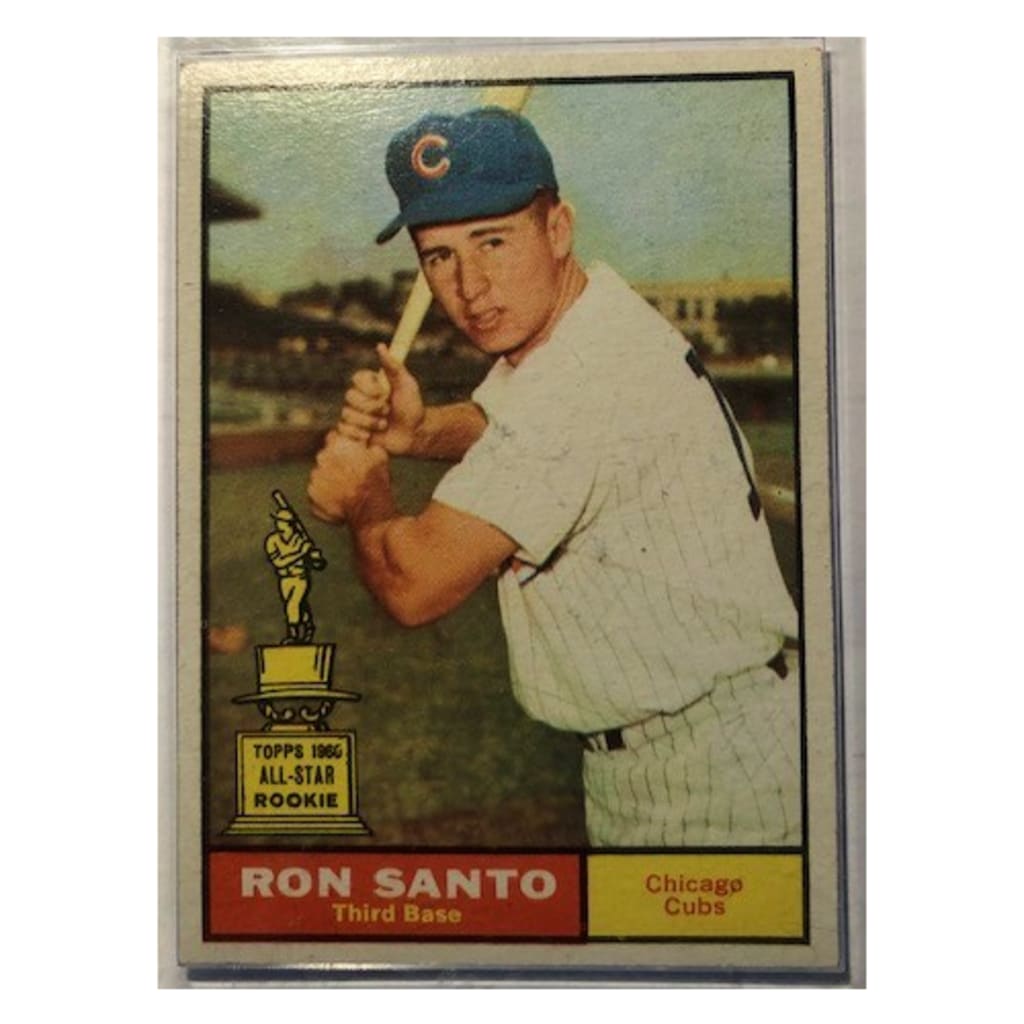
Iconic Cubs rookie card: Ron Santo, 1961 Topps
A Santo rookie card would be a classic for any Cubs fan. But Edward Kope, who submitted Santo's '61 Topps card, has an extra reason for loving it.
"This card was literally in the first pack of baseball cards that I ever bought," he writes. "I honestly can't remember if I was a Ron Santo fan before I got that card -- or because I got that card."
Either way, how could you not be a Santo fan? The third baseman spent all but one of his 15 big league seasons with the Cubs, and was one of the best of his era at the hot corner. Santo was a nine-time All-Star, five-time Gold Glover and he amassed 342 career home runs.
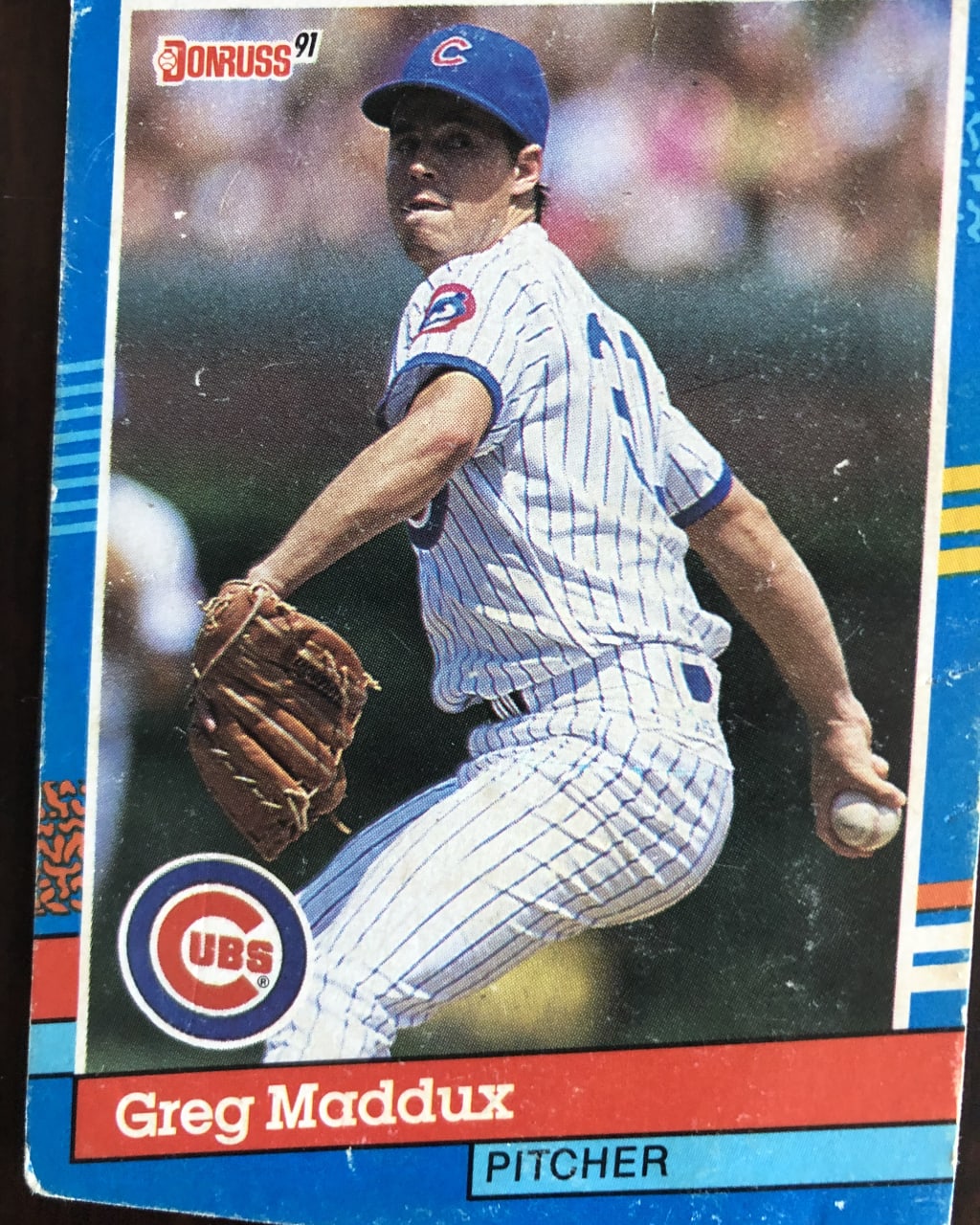
Greg Maddux -- 1991 Donruss
Maddux will always be remembered most for his time with the Braves, when he rose to become the best starting pitcher of the mid-1990s and helped the franchise bring home its first World Series title since moving to Atlanta.
But Maddux began his career with the Cubs, and won the first of four career Cy Young Awards with Chicago in 1992. From the very beginning, one of the great elements to Maddux’s legend was that he looked like a CPA, or another comparatively ordinary citizen.
“Greg Maddux,” Ken M. of Chicago wrote in his survey response. “Just because physically he was an ordinary guy that did extraordinary things.”
Indeed. A Hall of Fame career from a guy who proved that it’s not how athletic you appear to be that matters in baseball. For Maddux, it was his pinpoint control and uncanny ability to baffle hitters with changes of speed. -- Manny Randhawa

Sammy Sosa, 1994 Fleer Extra Bases
This extra-long card captures the powerful swing of Slammin' Sammy four years before he went head-to-head with Mark McGwire in the legendary home run race of 1998.
McGwire's 70 home runs won the race and established a new MLB single-season record, but Sosa's 66 broke Roger Maris' old mark, too, and the Sosa-McGwire slugfest made for one of the most memorable baseball seasons in recent history. Plus, it was Sosa who won the NL MVP Award that year.
But fan Rachael Bricker of Elmhurst, Ill., has a funny story about why this card is her favorite: "One time in Spanish class, my Spanish teacher was telling us about how when she introduces herself to people and says she’s from Chicago they always ask her about Al Capone and Sammy Sosa," she recalls. "Then everyone was talking about Sammy Sosa, and I was telling them about how I had his baseball card. They didn’t believe me at first until I sent them a picture of it, and then they were all, like, 'Wow.'"
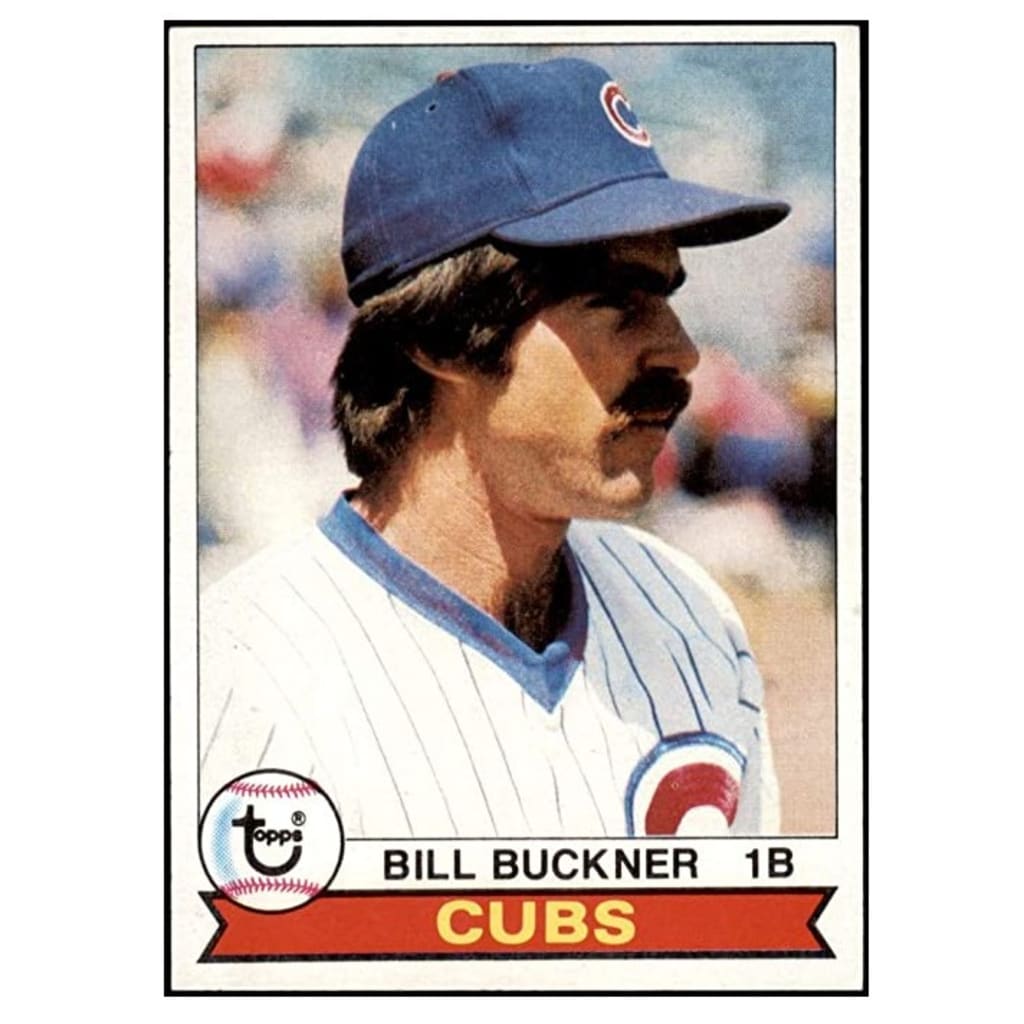
Best Cubs facial hair card: Bill Buckner, 1979 Topps
It’s hard to tell which was thicker -- Buckner’s mustache or his eyebrows. The competition seemed to wage on for Buckner’s entire career, and his ‘79 Topps card did a good job of capturing it.
For young Joe Mendoza, now from Los Angeles but formerly of Palatine, Ill., pulling that card out of a pack changed his baseball fortunes.
“When this card is released I’m 10 and have become a hardcore baseball fan and Cubs fan," Mendoza wrote. "Bill Buckner was my favorite player. When I opened the pack of cards, on my way to a little league game, and saw Bill Buckner I knew my luck would change. I was a career .000 hitter early in my second year. The day I got the card of my favorite player I got my first hit and played first base for the first time (which I continued to do). Somehow, having Billy Buckner in my card collection made me feel complete at the time and I went on to be a good hitter from that point forward.”
Buckner's '79 Topps card was also submitted by Edward Koper. Why does Koper like it so much? Because it's a reminder of his momentary brush with fame.
“I was asked for my autograph several times at O'Hare airport in Chicago in the late ‘70s because people thought I was Bill Buckner,” he wrote. -- Thomas Harrigan
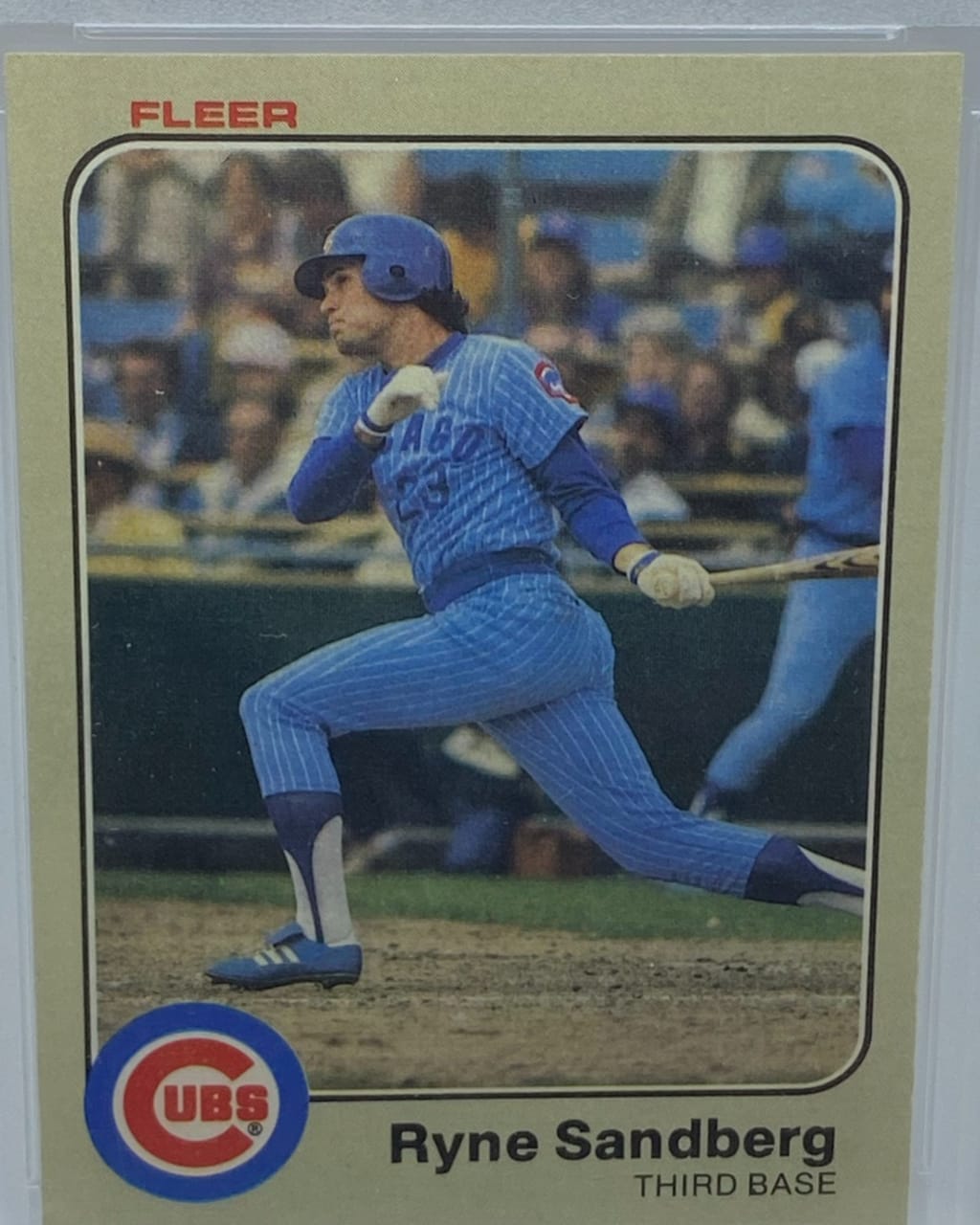
Cubs: Ryne Sandberg, 1983 Fleer
This card is beautiful for a whole host of reasons. First, it’s the rookie card of a Hall of Fame second baseman. But it’s also incredibly aesthetically pleasing with the Cubs logo at the bottom-left and the simple border around the photo. And look at that gorgeous uniform, with the powder blue, pinstripes, “Chicago” across the front, as well as Sandberg’s No. 23.
Sandberg is recognized as one of the greatest players in the long and rich history of the Cubs, winning nine Gold Glove Awards and the 1984 NL MVP Award while being selected as an All-Star 10 times. “Ryno” was a hero to many in the Chicago region, including Ryan T. of Martinsville, Ind., who submitted this card in our survey.
“This card always reminds me of all the lawns I mowed to be able to buy a Ryne Sandberg rookie card,” Ryan wrote. “More importantly, it also reminds me of my dad. He always made time to take me to the card shops near our home. I loved ripping open wax packs with him and comparing who had the best pack. I can still smell and taste that crunchy gum!”
Mowing lawns to earn enough money to buy a Ryne Sandberg rookie card? Opening wax packs with Dad? Talk about nostalgia. -- Manny Randhawa
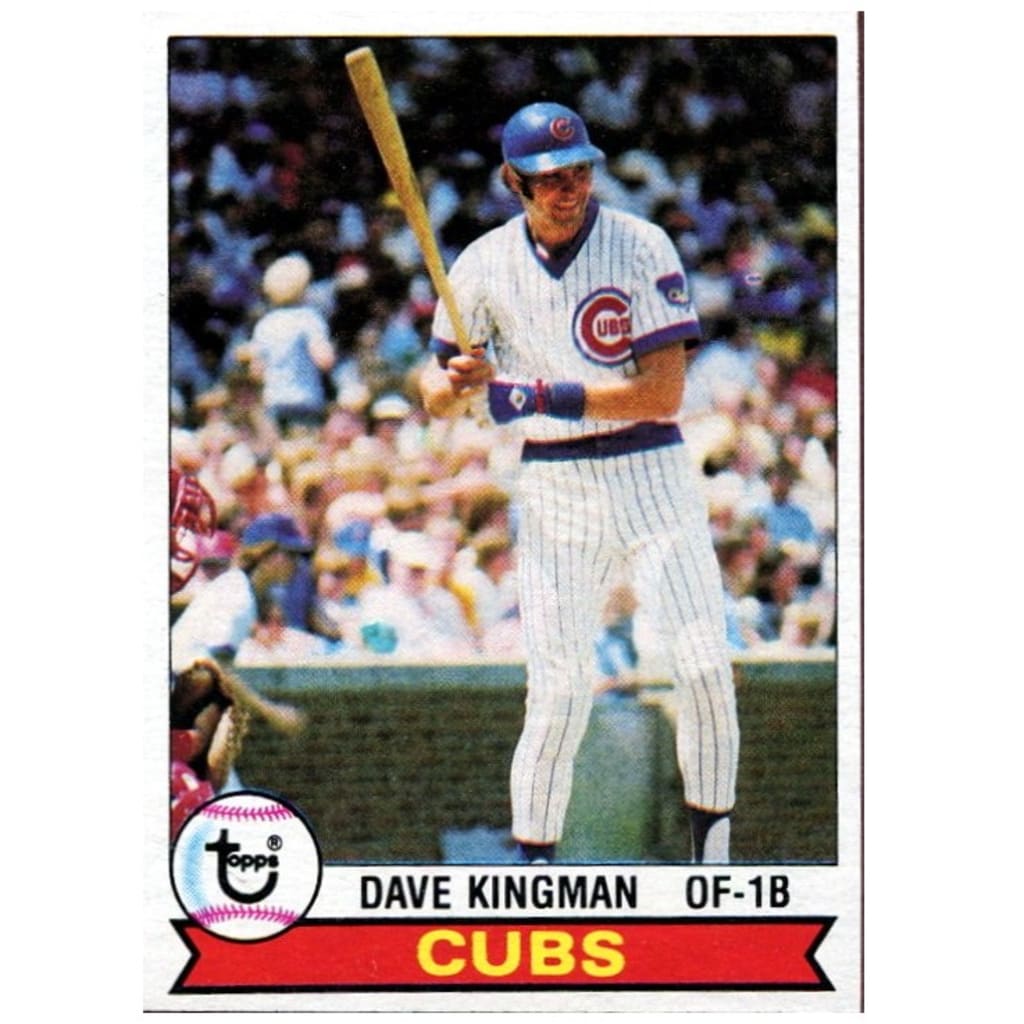
Dave Kingman, 1979 Topps
Known for his impressive power and propensity for striking out, Kingman played for seven teams over 16 years in the Majors and hit 442 homers.
Kingman reached new heights for the Cubs in ‘79, crushing a Major League-leading 48 home runs. On a Chicago club that went 80-82 and missed the playoffs for the 34th straight season, the outfielder was the main attraction, and Chicago’s Ken Fitzner had to have Kingman’s card from that year’s Topps set, which shows the slugger (sans mustache) stepping to the plate at Wrigley Field with a big smile on his face.
“I was in third grade and became a huge fan of the Cubs, because my dad was a huge Cubs fan,” Fitzner wrote. “In those days the Cubs being awful was the norm. Then something magic happened. The Cubs left fielder began crushing home runs. My dad would call him King Kong. Every day when school let out I would try to get home as fast as possible to catch a little bit of the Cubs game. Most days I would not buy milk for lunch at school and would take my quarter, stop at the local five and dime, and buy a pack of Topps trading cards. The goal, a 1979 Dave Kingman card.
“For over a month I would buy packs, chew the gum and flip through to find no magic Dave Kingman card in the pack. Oh sure, a George Foster, but no Kingman. One day, I bought a pack of cards and decided to wait until I got home to open it. When I did the wrapper slowly revealed the Kingman card right on top. I literally started jumping around the house to my mom’s dismay. But I had it, my ‘79 Dave Kingman card and I still have it to this day.” -- Thomas Harrigan
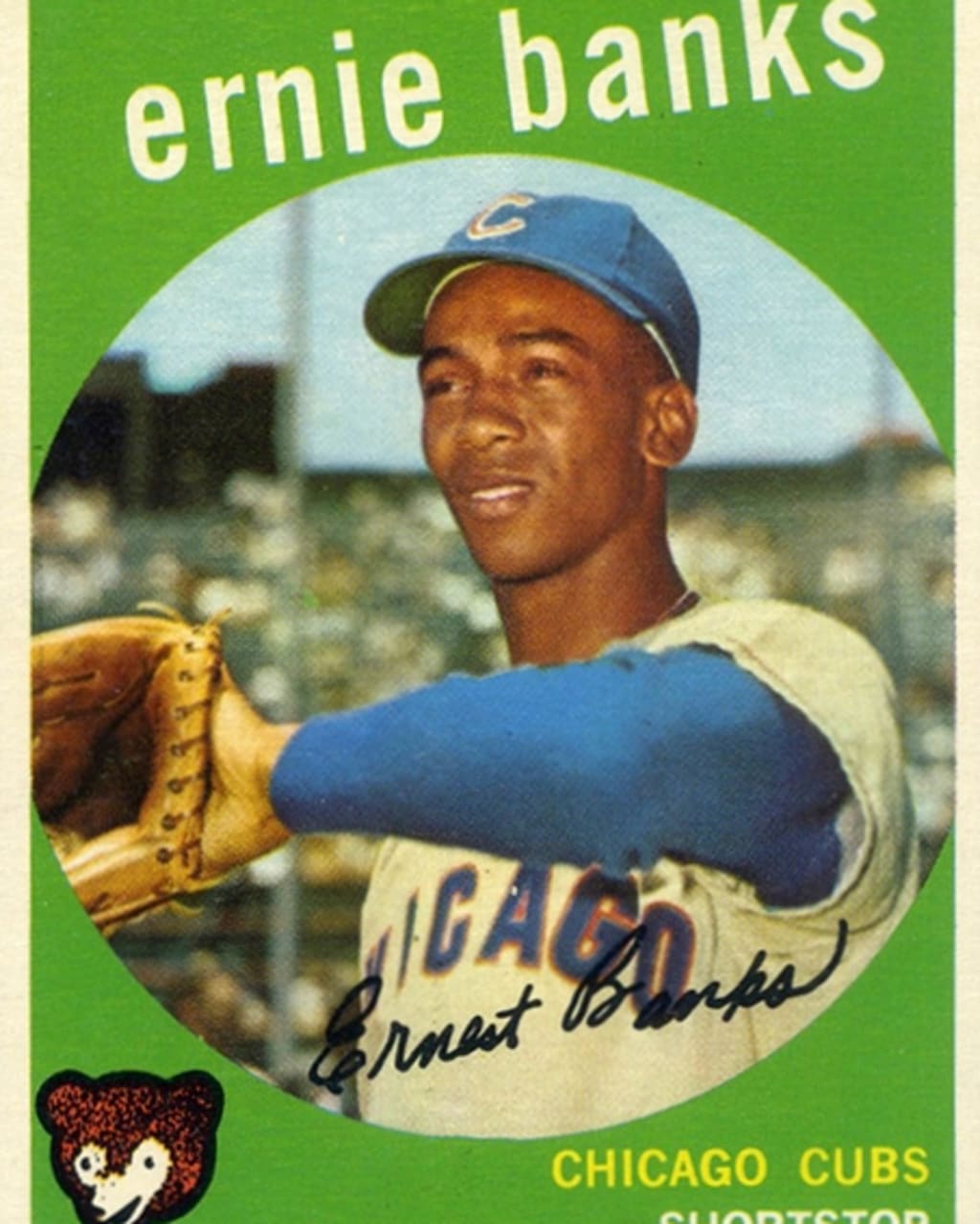
Iconic Cubs card: Ernie Banks, 1959 Topps
When you think Ernie Banks, you probably think about the phrase "Let's play two!" Banks loved doubleheaders, and between his love of being on the field and the historic franchise he played for, all the ingredients are there for a classic card that inspires nostalgia among baseball fans. That's exactly what you get with the 1959 Topps Ernie Banks, which shows Banks playing catch, and there's a prominent green border around the circular photo. The grass-green border and the Cubs blue stand out beautifully.
Phil G. of Frederick, Md., grew up just outside Chicago in the 1960s, and Banks was his hero. Phil submitted this gorgeous card, which he acquired in a trade with a friend when he moved to New York.
"I was so thrilled, because I had never seen it before, and Banks looks like a kid!" Phil wrote in his survey response. "I guess on some level, I must have known that there were numerous Ernie Banks cards that were older than the ones I had (1969, 1970, 1971), but there wasn't any way to have seen them. Anyway, I had to try to contain my enthusiasm, lest my trading partner decide he could command a higher return for the card. It's been my favorite ever since."
Banks had a spectacular career that spanned 19 seasons, all with the Cubs. He was a two-time National League MVP Award winner, selected as an All-Star in 11 of his 19 seasons, twice led the Majors in homers (47 in 1958, 41 in 1960) and launched 512 homers for Chicago. He was inducted into the Hall of Fame in 1977.
The 1959 Topps card bearing Banks' image is worthy of a Hall of Famer of his stature -- it also includes his signature printed on the front, as well as one of the great Cubs logos of all time, the cartoon head of a bear cub.
When you hear "Let's play two!" this is a great baseball card to have come to mind.
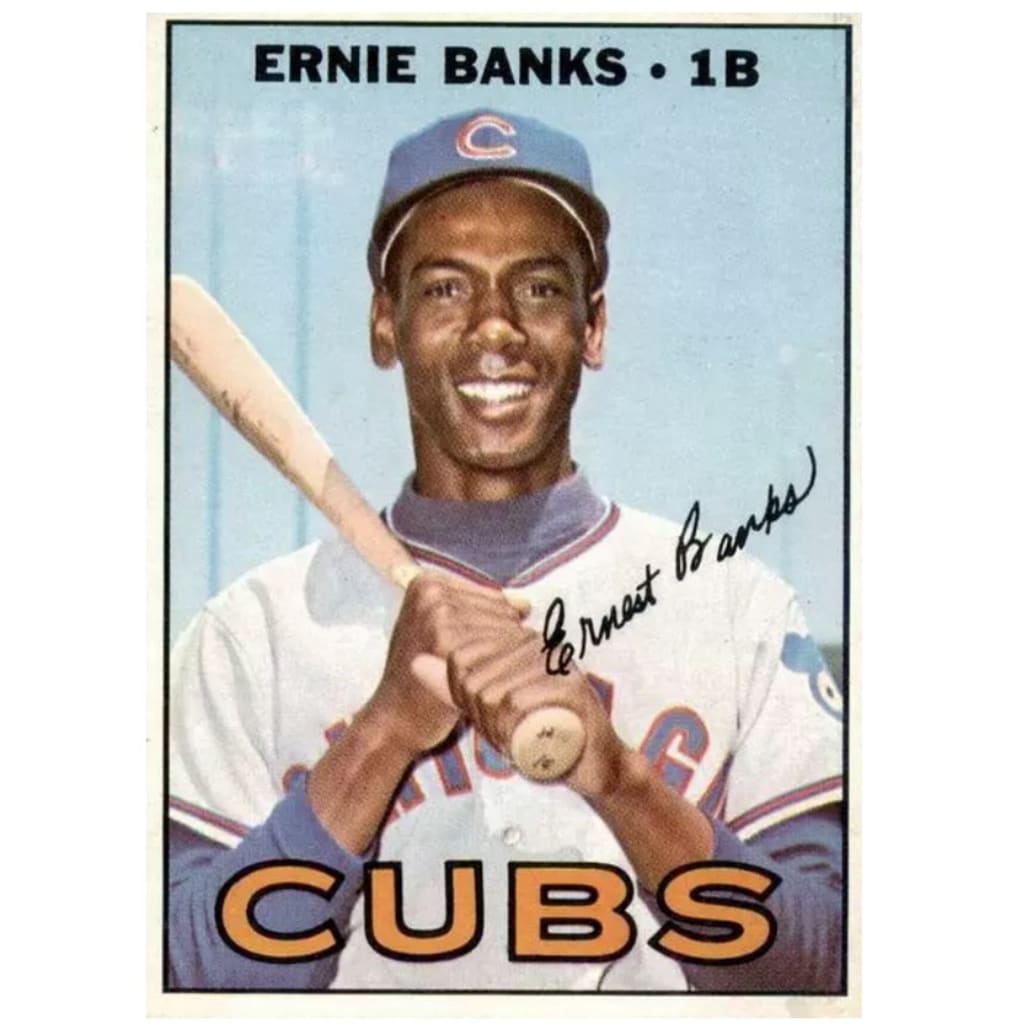
Ernie Banks, 1967 Topps
Thanks to Culley Scarborough of Helene, Ala., for submitting this beautiful card of Mr. Cub himself and providing a great description to boot.
"Bright blue sky, crisp uniform and that megawatt Ernie smile! This card just screams joy!" Scarborough wrote.
We agree, Culley. -- Thomas Harrigan
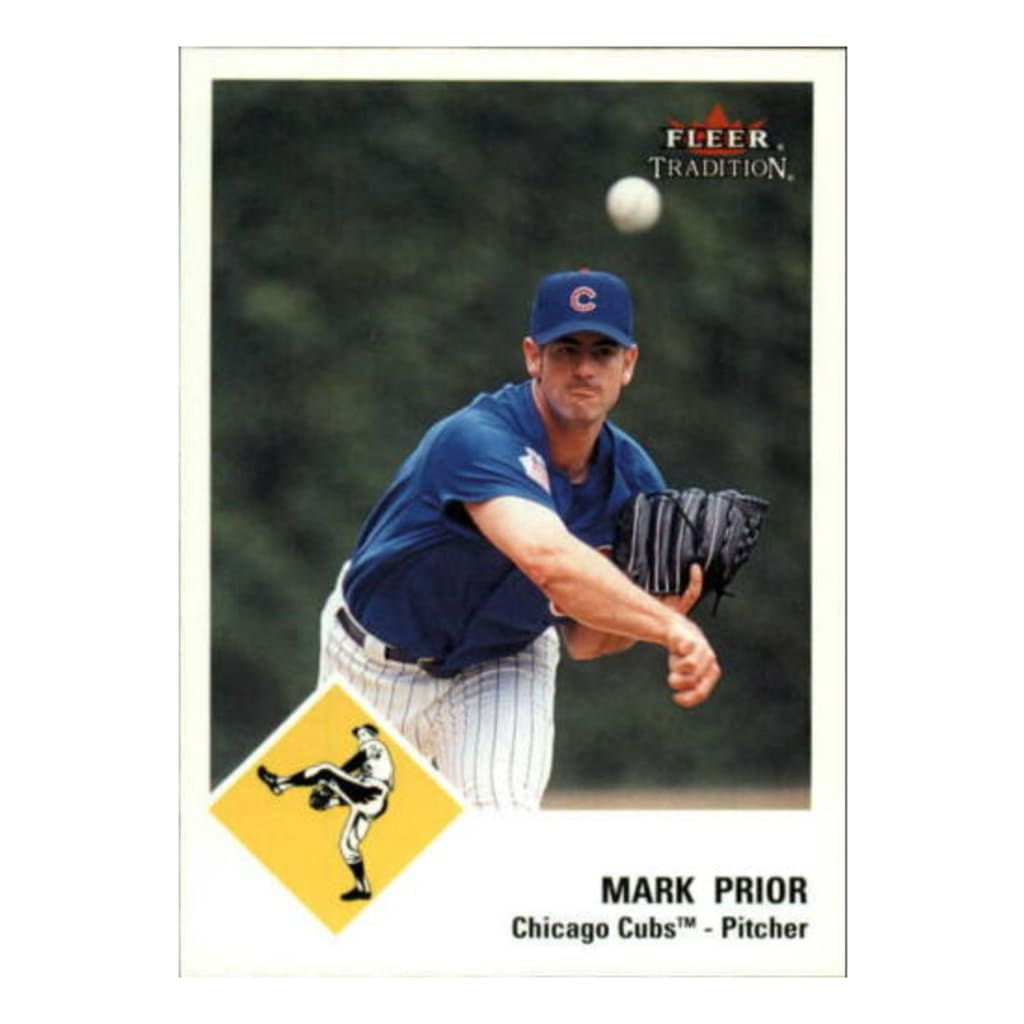
Mark Prior, 2003 Fleer Tradition
This card is great because it lets you remember Prior as he was at his best. Here, the then-22-year-old is captured just after he releases a pitch, the ball frozen mid-air in the foreground on its way to the plate.
Prior was about to electrify baseball with an absolutely dominant season. The right-hander went 18-6 with a 2.43 ERA and 245 strikeouts for Chicago. Before injuries derailed his career, he was something special.
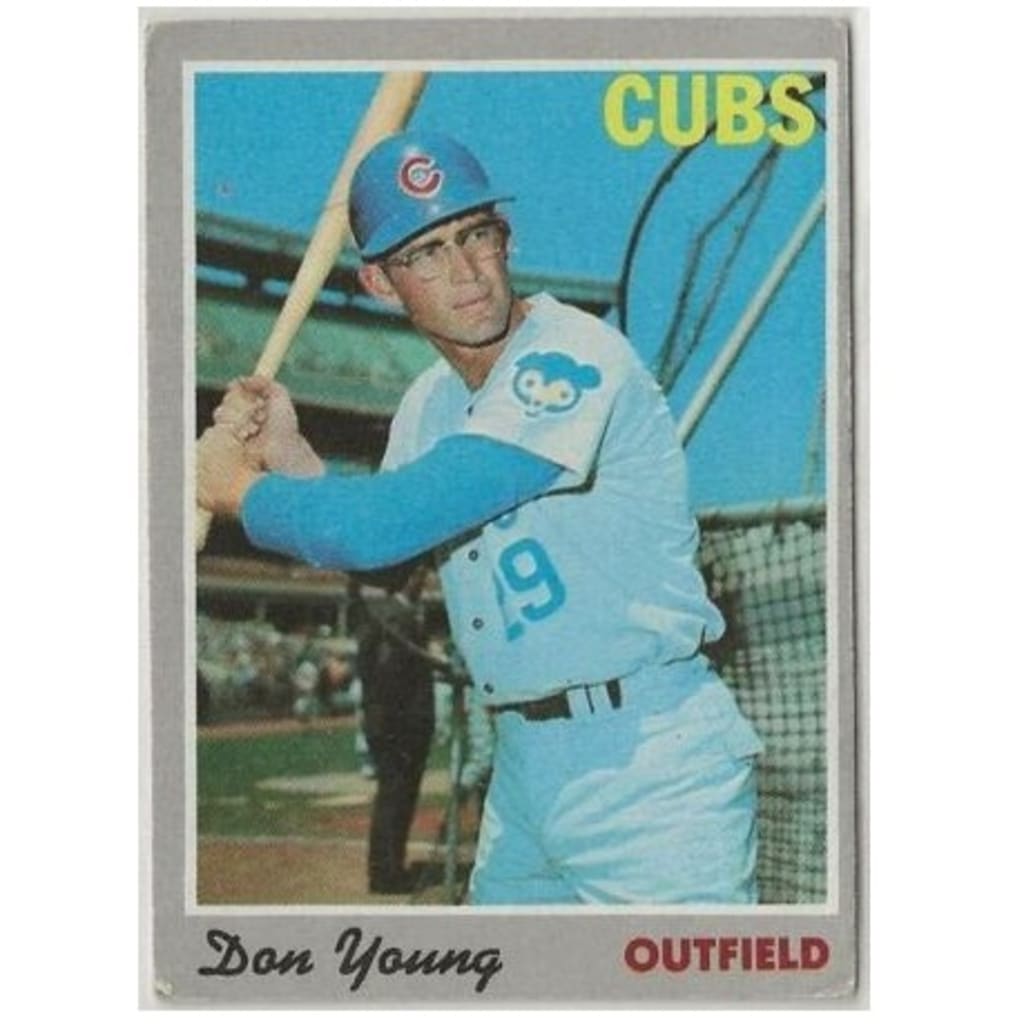
Don Young, 1970 Topps
Young played only two seasons in the Majors and hit .218 overall, but the stats don’t matter to Jeff Foster of Melbourne, Ky.
Foster submitted Young’s 1970 Topps card in our survey, and his reason for picking it is simple.
“I was 7 years old and that was the first card I saw when I opened my very first pack of baseball cards,” Foster wrote. “It has always held a special place in my heart because it was my first card.”
That's the beauty of baseball card collecting and fandom in general. A player doesn't have to be a star to be special in someone's eyes. -- Thomas Harrigan

Mark Grace, 1988 Donruss Rated Rookie
There's something uniquely special about mailing a baseball card to a player and having him sign it and send it back. Paul H. of Whitehall, Mich., knows the feeling. He mailed this Grace Rated Rookie card to the man himself and it returned with an autograph.
Check out a baby-faced Grace before three All-Star selections and four Gold Glove Awards. The slick-fielding first baseman had a great career ahead of him, one that would include a 13-year run with the Cubs before a World Series ring with the 2001 D-backs. -- Manny Randhawa
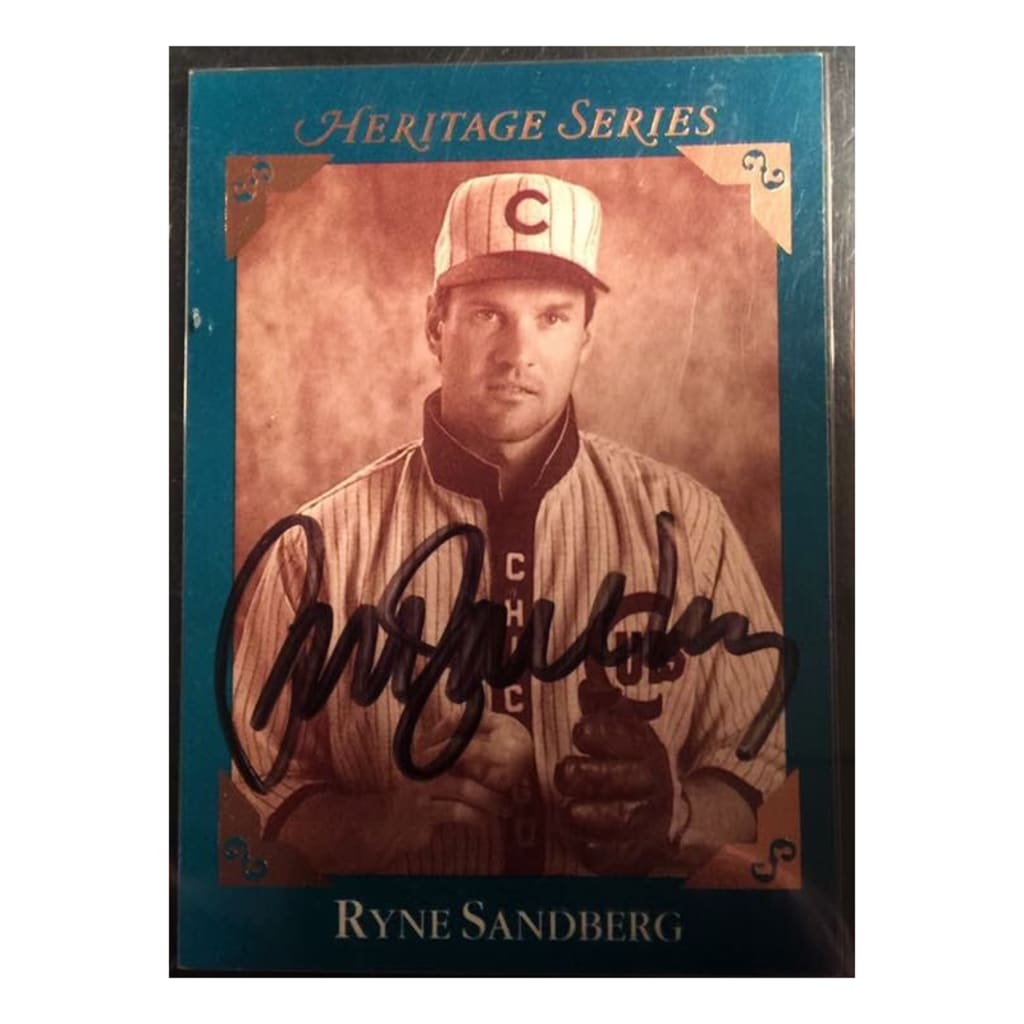
'90s throwback: Ryne Sandberg, 1992 Studio Heritage
This '90s Studio Heritage card of Sandberg shows the Hall of Fame second baseman in quite the vintage style.
The card was submitted by fan Aaron Goodrich of Oklahoma City, who got it autographed by Sandberg, too.
"I had this card signed in person at a Minor League Baseball game in the late '90s," he writes. "Sandberg was making an appearance at a then-Rockford Cubbies Single-A game."
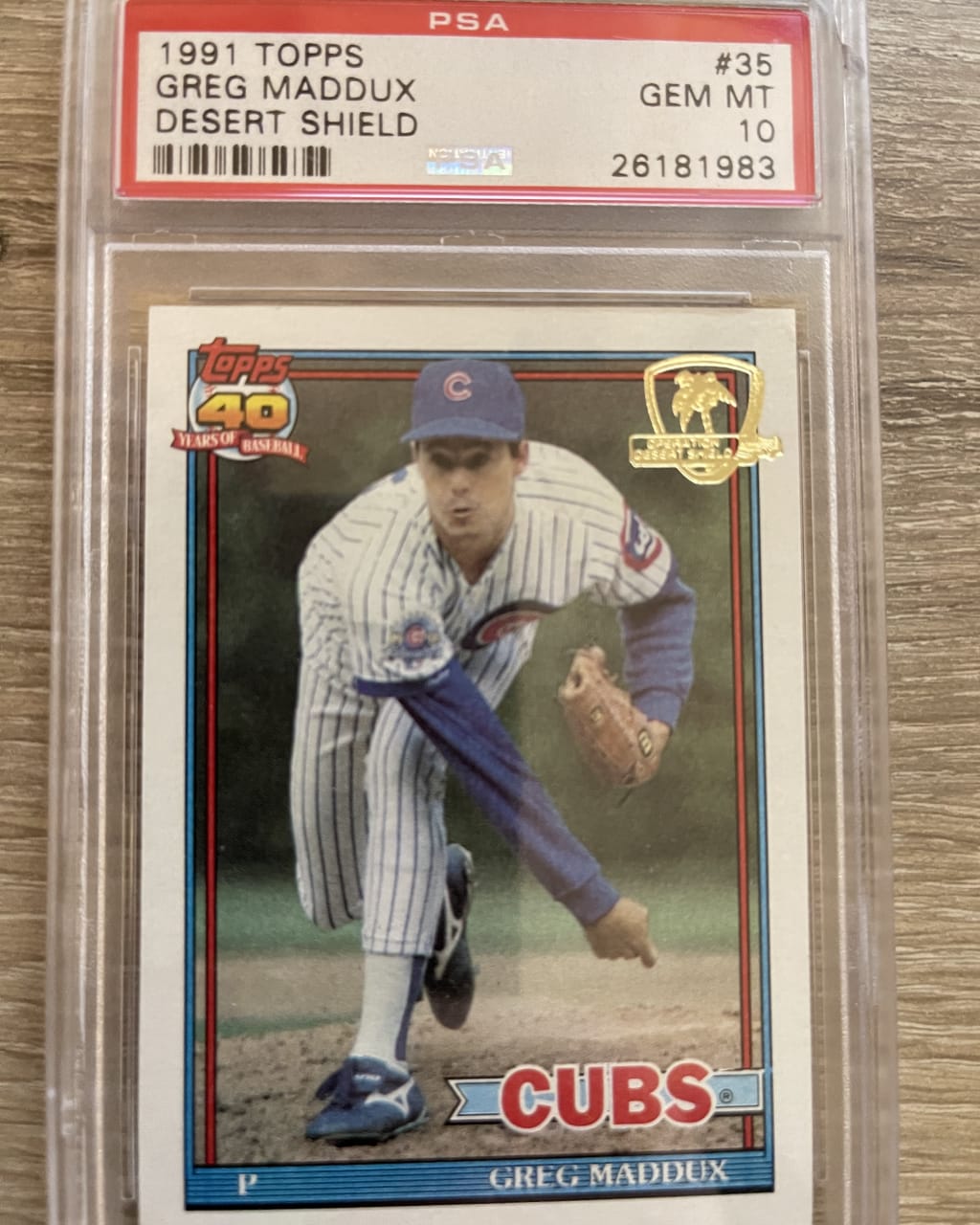
Greg Maddux, 1991 Topps Operation Desert Shield
This Greg Maddux card from the 1991 Topps set might look like an ordinary card at first glance, but it's actually more rare than you might think.
The gold stamp in the upper right hand corner indicates that this card was given to U.S. soldiers overseas in the early '90s during Operations Desert Shield and Desert Storm. What’s impressive about this card in particular, though, is the condition it is in. This Maddux card was given a perfect 10 on its condition by the trading card grading company PSA, meaning that this card is still in pristine condition 30 years later. In total, there are only 30 PSA 10 Maddux cards in existence.
Chris H., the owner of this card, received it while he was stationed in the Middle East and the card travelled with him to Germany soon after. He then submitted the card in 2015 and still received a gem mint grade on it. Kudos to you, Chris, for keeping it in perfect condition all those years. -- Nick Aguilera
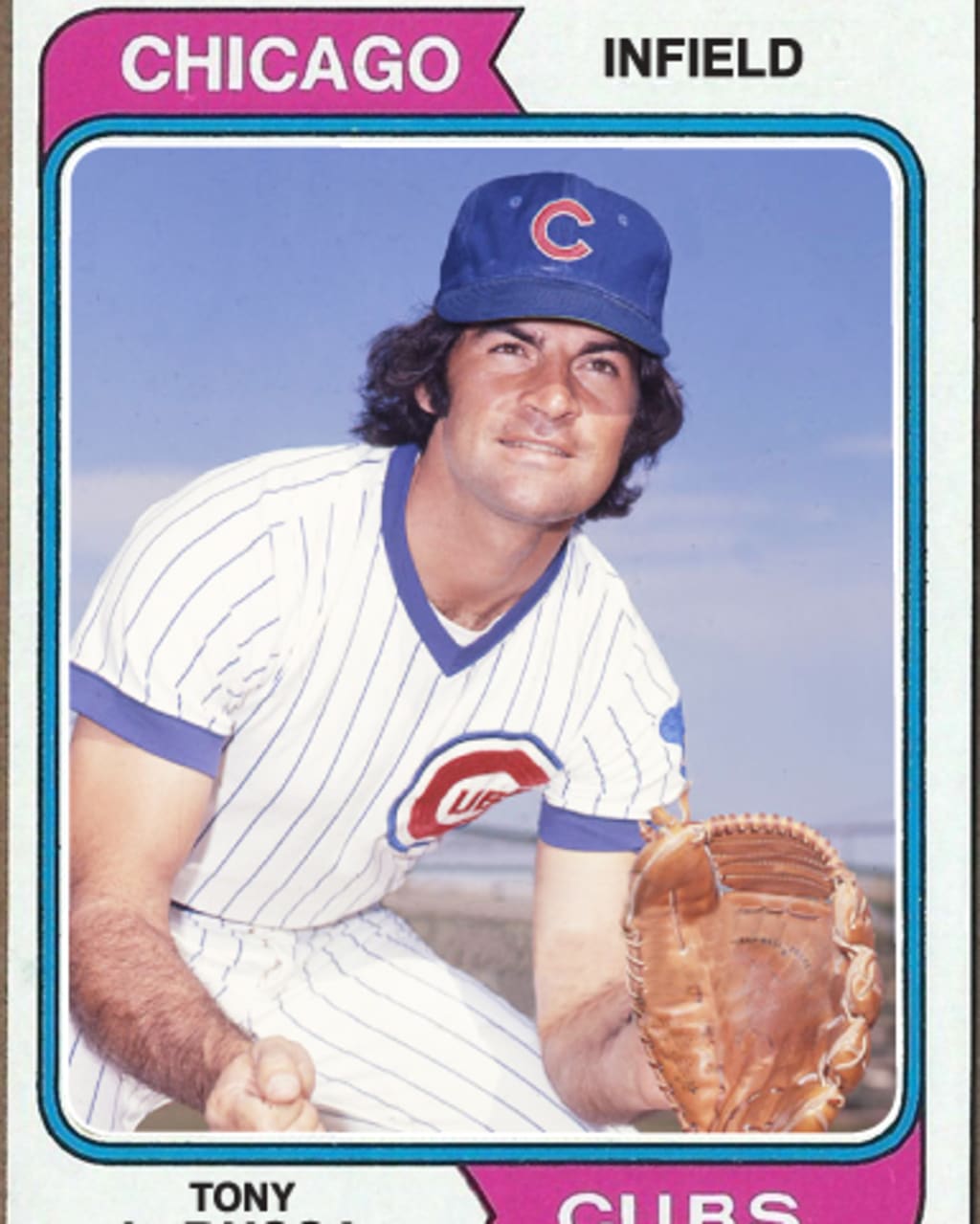
Tony La Russa, 1974 Topps
La Russa is now in his second stint as White Sox manager, guiding the club on the South Side of Chicago to what he hopes will be a deep postseason run. But did you know he spent some time with the North Siders, too?
La Russa was an infielder for the Cubs in the final year of his MLB career, 1973. To that point, he had played parts of four seasons with the A's and one with the Braves. And when he joined the Cubs, he appeared in exactly one game -- that came on Opening Day, when the Cubs hosted the Expos at Wrigley Field. He didn't start, but came in as a pinch runner for Ron Santo in the bottom of the ninth. He ended up scoring the winning run on a bases-loaded walk to Rick Monday.
La Russa spent another four years in the Minors before retiring as a player and becoming a manager. The rest, as they say, is history. After managing in the Minors, he got his first MLB managerial gig with the White Sox in 1979. He would go on to manage the A's and Cardinals before returning to Chicago, winning four Manager of the Year Awards and three World Series titles -- one with Oakland in 1989, and two with St. Louis, in 2006 and '13. -- Manny Randhawa
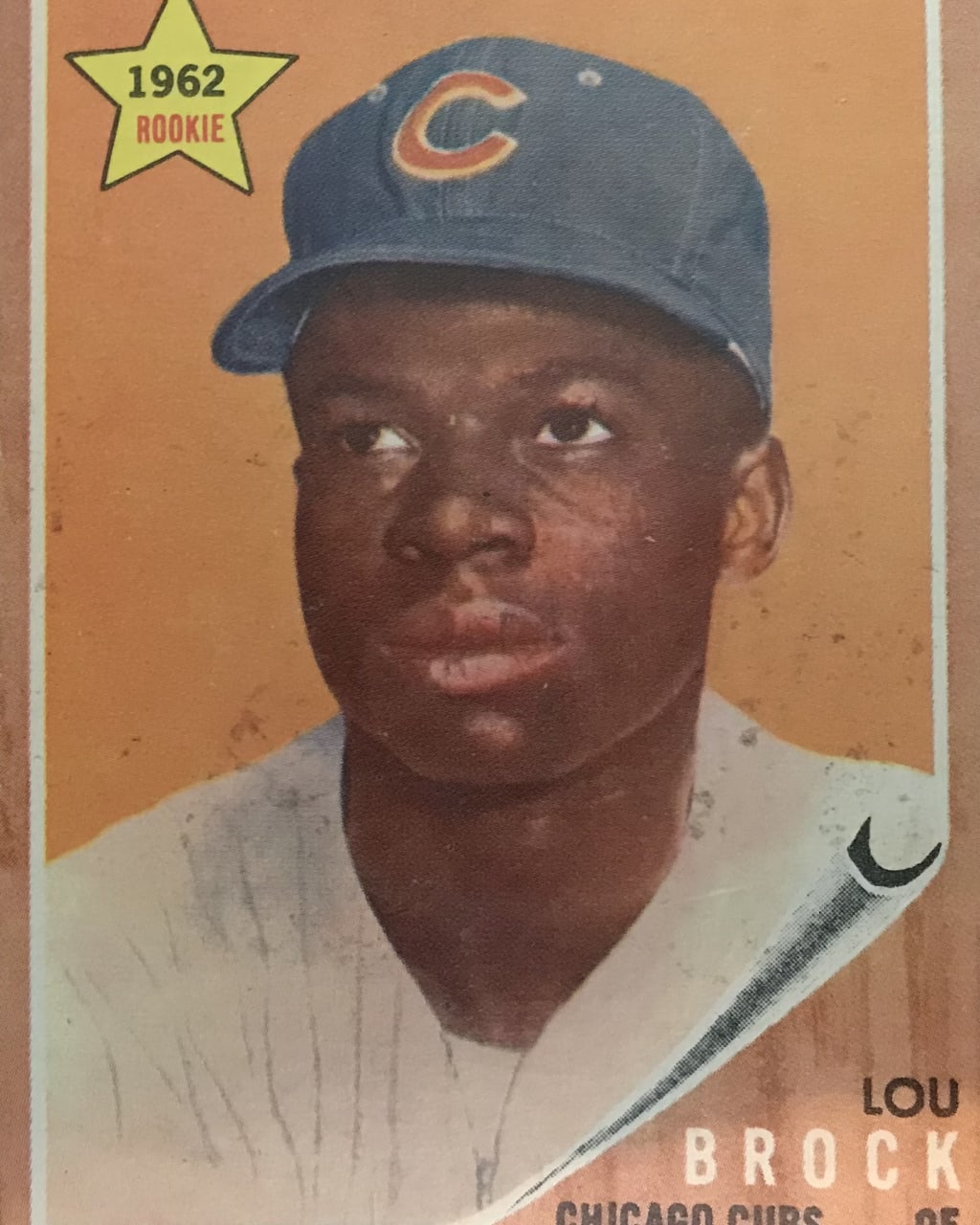
Lou Brock, 1962 Topps
Brock might be inducted into the Hall of Fame as a member of the intradivision rival Cardinals, but the speedy outfielder began his career as a Cub.
Brock spent parts of the 1961-1964 seasons on the North Side, hitting .257 across his 327 games with the club. He stole his first 50 bases in that timespan and his best season with the Cubs was arguably his rookie campaign in 1962. Brock stole 16 bases, hit nine home runs, 11 triples and 19 doubles. He ended the year slashing .263/.319/.412. He didn’t receive any recognition in Rookie of the Year voting though, as teammate Ken Hubbs took home the award.
Brock was traded in June of 1964 for Ernie Broglio, Doug Clemens and Bobby Shantz in a transaction that Chicago probably wishes to erase from its history. Lou went on to steal 938 bases, an MLB record that would stand until 1991, and was a first-ballot inductee into the Hall of Fame in 1985. -- Nick Aguilera
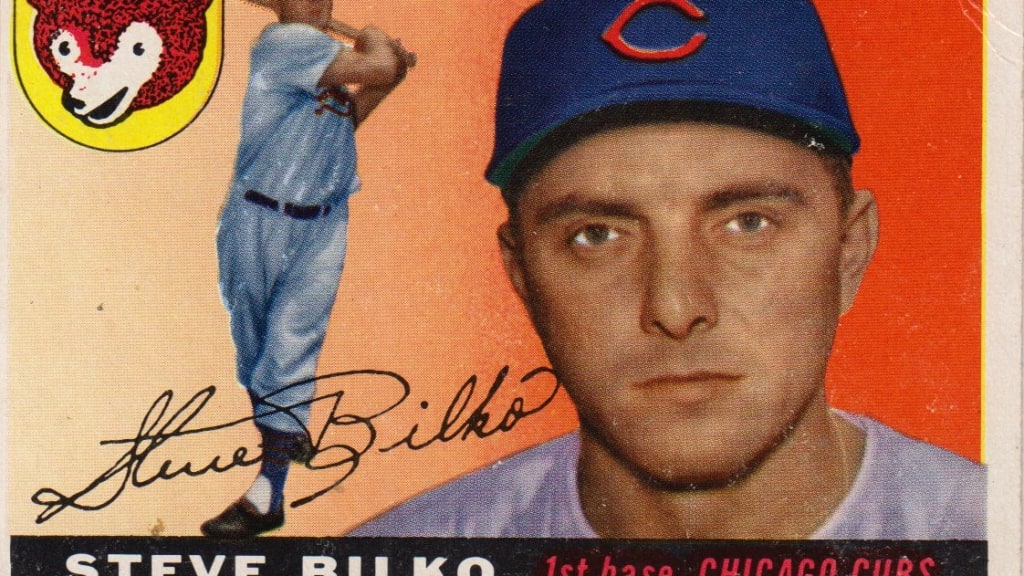
Steve Bilko, 1955 Topps
You know how there are some guys that absolutely light up the Minors but then struggle in the big leagues? That’s Bilko, who was an incredible Minor League slugger but never really put it together in the Majors.
Still, when you fall in love with baseball as a kid, anyone can be the player who sparks that love. For Jim W. of Minneapolis, it was Bilko, and there’s something poetic about following your favorite player through thick and thin.
“Bilko never caught on with the Cardinals, even though he had a pretty good year in 1953,” Jim wrote. “They sold him to the Cubs during the 1954 season. Bilko didn’t play for the Cubs in 1955. They sent him the Los Angeles Angels, their Pacific Coast League farm team. A hefty guy in the mid-200-pound range, he hit 37 home runs and had a .328 batting average. In 1956, as the superstar of a super team with a 107-61 record, Bilko won the Triple Crown with a .360 batting average, 55 homers, and 164 RBI. He raised his home run total to 56 in 1957.
"After three years as Pacific Coast League MVP, Bilko returned to the Major Leagues for several more undistinguished seasons. Being there for a Sunday double-header at beautiful Wrigley Field (in Los Angeles), ivy-covered like its namesake in Chicago, was ecstasy for a 13-year-old Angelino like me!”
Wow -- check Bilko’s numbers, and you’ll see that Jim is spot on; Bilko actually did launch 148 homers from 1955-57, and 313 homers in 13 Minor League seasons overall. Ironically, his best MLB season also came with the Angels after the club joined the American League in 1961 -- Bilko posted a .940 OPS with 20 homers in 114 games for the Halos in their inaugural MLB season. -- Manny Randhawa

